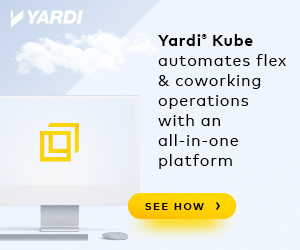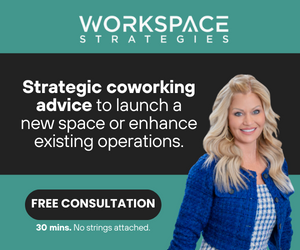- While organisations are looking forward to bringing back workers into the office, they are also rethinking the role the office will play.
- This raises several questions, including what the future of the office is if only a small percentage of workers return to it.
- In a recent presentation for the Smart Workspace Design Summit, Mike Walley argued that the future of the workplace will be extraordinarily different from what we knew just a few months ago.
As business leaders weigh up the pros and cons (and costs) of bringing workers back to the office, an interesting change is happening.
At one end of the spectrum, organisations are keen to get their people back and return to some sort of normal as quickly as possible. They are investing in measures to make their workplaces safer, such as partitions and ‘sneeze screens’, temperature checks on entry and one-way systems around the building.
At the other end, companies are taking a long hard look at this investment and considering whether, in the long run, it’s worth it. If their teams are happy and productive working from home, and if they can continue to work remotely with occasional time at an office or meeting venue, then perhaps there’s no need for an immediate return to the workplace.
This dilemma raises several questions:
- What is the future of the office if only a small amount of people go back to work?
- Does the office become an expense some organisations no longer need?
- What is the office for, anyway?
In a fascinating presentation for the Smart Workspace Design Summit (June 2020), speaker Mike Walley, Senior Director of Global Real Estate & Workplace Strategy at Criteo, concluded that we no longer need the office in the same way as before.
The office won’t die, but it will change, and the future of the workplace for those who are willing to accept this change will be extraordinarily different.
Here are the highlights of Walley’s talk, which illustrate how he came to this conclusion and what this perspective could mean for the future workplace.
What is the Office For?
Extracts from Mike Walley’s presentation ‘Exit Strategies: The Cost of Getting Back to Work’
We decided, let’s get on with thinking about the actual nuts and bolts of getting people back into the office. How can we open up our spaces while maintaining physical distancing? How can we keep people safe? What are the protocols?
The first thing we realised was, it’s very hard.
We have 39 offices across the globe. We realised that we could only accommodate 20%, possibly 25%, of people in the office safely. So we started working with manufacturers to develop the things we needed. Screens to go between desks; hand sanitiser stations; and desk guardians — a giant post-it note the size of A0 paper, that people can peel off and lay on the desk so they’re always in contact with a clean surface.
Then we thought about what we would do if someone in our team fell ill with COVID-19. We realised we would have to shut the entire office and deep clean it. To minimise disruption, we planned to open one floor at a time, so that if it becomes contaminated, we could close it and move everyone to the next floor.
By this point it was getting very complicated.
Then we received pricing for all the equipment we would need to re-open, sanitisation stations and so on. Globally, this would be an investment of $500,000. This investment is still only for around 20% of our workforce.
So then we stopped and thought, let’s check in with our home-workers and see how they’re doing. We reached out to all our people and 86% were really happy working remotely. Most said they would prefer not to work remotely 5 days per week, but they liked the flexibility and were hopeful that we would continue doing it.
Ours is a knowledge business, so working remotely is feasible. And when we looked at our productivity, it hadn’t taken much of a hit at all.
While we were weighing up the effort and cost of getting a very limited number of people back into the office, who were actually very happy being at home, it gave us pause for thought.
It was around that time that tech firms like Twitter started announcing they would let people stay at home.
The bigger picture is: what is the office for?
Years ago, the office was about resources. That’s where you went to get email, print documents, make calls, sign contracts, and so on. But now we can do all of that from anywhere.
So if the office is not for resources, what is it for? It’s about interaction and social connectivity. It’s where we go to refresh our connection with the company brand and connect with our peers. But we don’t go there to create work products.
So instead of a place of resources, offices become a centre of gravity.
I think offices will become physical manifestations of the company. Places to drop in, drop out, connect, and recharge.
We’re now beginning to look carefully at how we redesign the way our business works in relation to our staff. How do they want to work? Our latest survey had an 89% response rate – amazing. That level of engagement that’s focused on change, means change is coming. It’s a conversation that staff want to happen.
We’ve always had conversations about flexible work, but this, I believe is a real moment.
Walley’s insights show some of the considerations that companies all over the world are now facing.
We know the office isn’t dead. But the way companies use it is changing and will continue to change, as they navigate the new normal.
Companies that use offices as “centres of gravity” and places for connection likely won’t require as much space as before. Their workplaces will become more about human experiences and collaboration rather than square footage.
Even for companies that do intend to fully re-open their offices, public transportation remains an issue.
For those people who don’t want to commute at peak hours, or who have discovered the flexibility and wellbeing of working remotely, rural and suburban workspaces can enable companies to create a ‘hub and spoke’ model that ensures collaboration happens without the need to bring the entire workforce back to a centralised office.
Long-term, the business landscape is shifting and many organisations are now completely reshaping. Flexible workspaces have an opportunity to fill the void for restructuring companies by providing the ‘spoke’ location, and the social connectivity that businesses are now looking for in their new normal.

 Dr. Gleb Tsipursky – The Office Whisperer
Dr. Gleb Tsipursky – The Office Whisperer Cat Johnson – Coworking Marketing Maven
Cat Johnson – Coworking Marketing Maven Angela Howard – Culture Expert
Angela Howard – Culture Expert Drew Jones – Design & Innovation
Drew Jones – Design & Innovation Andrea Pirrotti-Dranchak – Competitive Advantage
Andrea Pirrotti-Dranchak – Competitive Advantage Jonathan Price – CRE & Flex Expert
Jonathan Price – CRE & Flex Expert Jeremy Fennema – Tech Innovation Alchemist
Jeremy Fennema – Tech Innovation Alchemist







